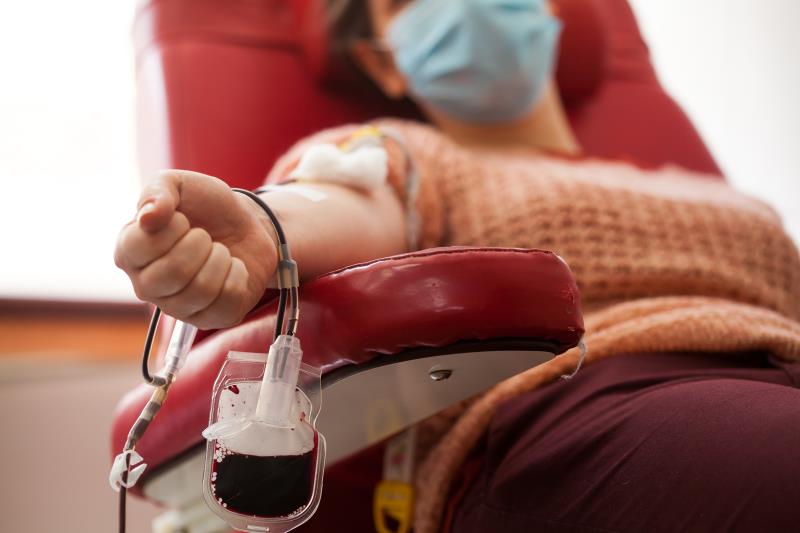Convalescent plasma of no benefit in life-threatening COVID-19





Convalescent plasma therapy does not appear to improve clinical outcomes or mortality in patients with severe or life-threatening COVID-19, according to a study from China.
This open-label trial conducted at seven medical centres in Wuhan, China, included 103 adults (median age 70 years, 58.3 percent male) hospitalized with severe or life-threatening* PCR-confirmed COVID-19 (with chest imaging-confirmed pneumonia). They were randomized (median time 30 days since symptom onset) to receive standard therapy (symptomatic control and supportive care) with or without convalescent plasma transfusion (median volume 200 mL; 96 percent received a single dose).
Convalescent plasma** (plasma unit: S-RBD-specific IgG titre ≥1:640) was obtained from adult patients fully recovered from laboratory-confirmed COVID-19 who had no persisting COVID-19 symptoms after discharge from hospital for >2 weeks.
Clinical improvement*** in 28 days did not differ between recipients of convalescent plasma and standard therapy alone (51.9 percent vs 43.1 percent; hazard ratio [HR], 1.40, 95 percent confidence interval [CI], 0.79–2.49; p=0.26 [time to clinical improvement]). [JAMA 2020;doi:10.1001/jama.2020.10044]
In patients with severe disease, clinical improvement in 28 days was more frequent in convalescent plasma compared with standard therapy recipients (91.3 percent vs 68.2 percent; HR, 2.15, 95 percent CI, 1.07–4.32]; p=0.03), though not among patients with life-threatening disease (20.7 percent vs 24.1 percent; HR, 0.88, 95 percent CI, 0.30–2.63; p=0.83; pinteraction=0.17).
Mortality at 28 days did not differ between convalescent plasma and standard therapy recipients (15.7 percent vs 24.0 percent; odds ratio [OR], 0.65, 95 percent CI, 0.29–1.46; p=0.30), nor did time to discharge from hospital, with 51.0 percent vs 36.0 percent discharged by 28 days (HR, 1.61, 95 percent CI, 0.88–2.93]; p=0.12).
There were zero and two deaths in the convalescent plasma and standard therapy groups, respectively, in patients with severe disease, and eight and ten deaths, respectively, in patients with life-threatening disease. Two transfusion-related adverse events (AEs) occurred (one incident of chills and rashes in the severe group and one of shortness of breath, cyanosis, and severe dyspnoea in the life-threatening group), both of which recovered after appropriate management.
“[T]he paucity of AEs is reassuring and reduces concerns about AEs from antibody administration,” said Professor Arturo Casadevall from the Johns Hopkins Bloomberg School of Public Health, Baltimore, Maryland, US, in an editorial. [JAMA 2020;doi:10.1001/jama.2020.10218]
The rates of conversion from positive to negative SARS-CoV-2 viral PCR were greater in the convalescent plasma vs standard therapy group at 24 (44.7 percent vs 15.0 percent; OR, 4.58; p=0.003), 48 (68.1 percent vs 32.5 percent; OR, 4.43; p=0.001), and 72 hours (87.2 percent vs 37.5 percent; OR, 11.39; p<0.001). The conversion rates were greater with convalescent plasma vs standard therapy at all time points among patients with life-threatening disease but was only significant at 72 hours among patients with severe disease (OR, 13.57; p<0.001).
“[These findings demonstrate] that the convalescent plasma treatment was associated with antiviral activity in patients with COVID-19,” noted the researchers.
Suggested benefits warrant further research
“[While] there was a signal of possible clinical benefit for convalescent plasma among patients with severe COVID-19, … the findings for the severe and life-threatening subgroups should not be interpreted as different [in this study],” said the researchers. However, they noted that early termination of the trial may have affected the results, necessitating studies in a larger population of patients with severe COVID-19 as well as earlier treatment with convalescent plasma, they said.
Casadevall also suggested looking into the potential benefit of treatment combining antiviral and antibody therapies in COVID-19.
“The availability of both convalescent plasma and remdesivir means that physicians now have at least two therapeutic options for COVID-19. Given that the mechanisms of action of antiviral drugs and neutralizing antibodies are distinct, they could be synergistic,” he said.